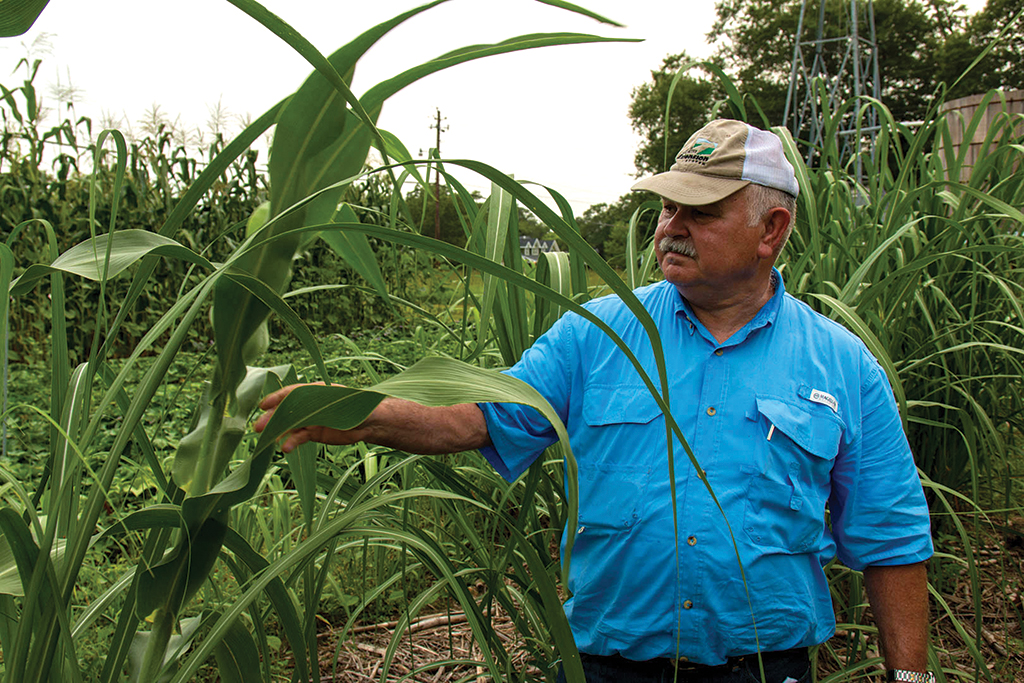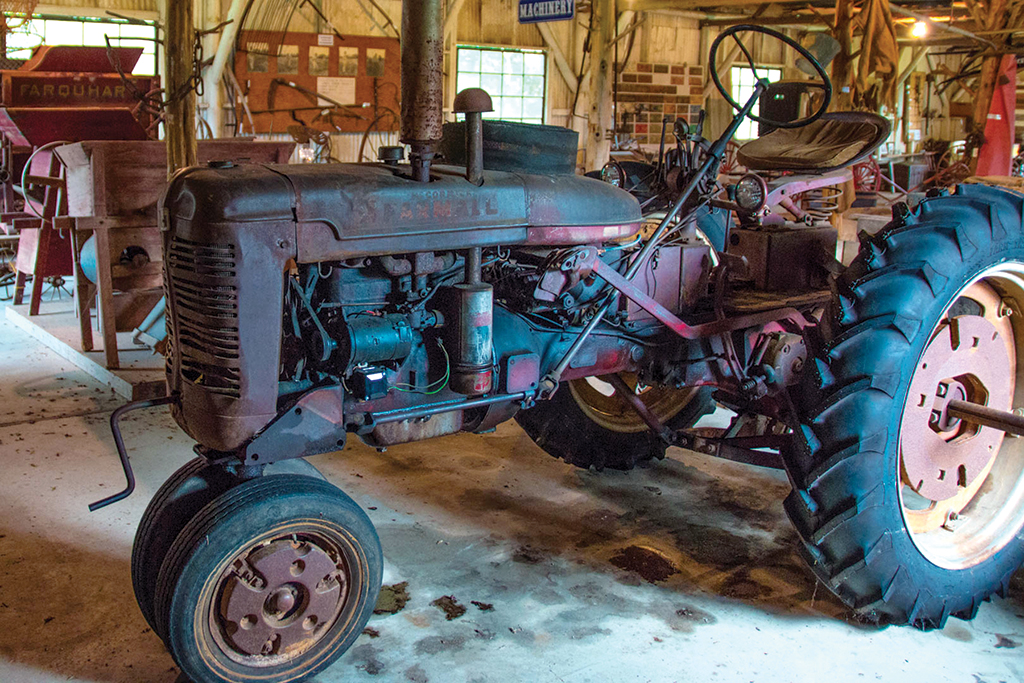
Lee County Historical Fair to showcase life, food from 1800s
Story and photos by Gary L. Smith
Dr. Charles Mitchell walks down a narrow row in one of the Lee County Historical Society’s gardens to show both sides in one of Alabama’s great rivalries, sugar cane and sorghum.
“People in north Alabama swear sorghum syrup is the best, so you can get a good argument going,” Mitchell laughs.
Mitchell is an agronomist and professor at Auburn University and vice president of the Lee County Historical Society. He’s been involved for decades with the Lee County Historical Society Fair, planned for Oct. 17. The history of syrup making, cotton production, country cooking, bluegrass music, and other parts of life in Lee County are preserved in the fair, as well as other events that go on every month in Loachapoka at Pioneer Park, he said.
The annual fair previously took place on Loachapoka’s “Syrup Sopping’ Day.” Syrup Soppin’ Day, a separate event run by a different organization, grew over the years and is moving to a different location closer to Auburn, Mitchell says. The event is now called “Pioneer Day in Loachapoka,” and they will continue to demonstrate syrup making at their event, Mitchell says.

At the Lee County Historical Society Fair, the park will be open to the public and a blacksmith guild makes items much as they would have been made in the 1800s, along with spinning and weaving demonstrations. There’s also mountain music from the “Whistle Stop Pickers,” a local group of bluegrass musicians who play dulcimers, banjos and fiddles.
Pioneer Park, the site of the event, also houses a number of other exhibits, including farming tools and implements from the 1800s through the mid 20th century, a medicinal herb garden, a crops garden including sweet potatoes, tobacco, peanuts, cotton and of course sugar cane and sorghum.
Sugar cane is a hard cane plant with palm-like fronds, while sweet sorghum looks like tall stalks with bushy tops. Sugar cane yields far more sugar content for making syrup, but doesn’t grow well in north Alabama, Mitchell says.

According to Mitchell, they are also working to complete the renovation of a log house that is the largest log structure in Alabama.
The park is also open on the second Saturday of each month. The blacksmith, spinning, and weaving demonstrations, along with the mountain music concerts, are there every second Saturday, along with country cooking, but you’ll have to come to the annual Historical Fair for their signature items – sweet potato biscuits and fritters with homemade syrup, Mitchell says.
Syrup making is still planned for the fair, but on a smaller scale, Mitchell says, adding that it was an important part of Alabama agricultural history. “A hundred years ago you grew your own sweetener. Kind of a tradition – you cut the sugar cane and made syrup. Everyone who worked (on the cotton harvest) got a five-gallon bucket and that was your sweetener for the winter,” Mitchell said.
The main building at Pioneer Park, now known as the Old Trade Center, was a place to buy and sell merchandise and was important to Lee County because the railroad line ended in Loachapoka, Mitchell says. Cotton was the leading cash crop and source of employment in Lee County and the rest of Alabama before World War II, and, according to Mitchell, this began to change when people returning from military service began to seek jobs in Birmingham’s growing steel industry and, closer to home, Opelika’s growing textile mills.
“Everything that goes on here has to have a connection to history. The vendors are either demonstrating, or selling, arts and crafts that represent Alabama’s history,” Mitchell says.
Sweet Potato Biscuits
- 4 cups self-rising flour
- ½ cup vegetable shortening or lard
- 2 cups cooked and mashed sweet potatoes
- ¼ teaspoon baking soda
- Buttermilk to make a soft dough
- Melted butter or margarine
Cut shortening into flour with a pastry knife; set aside. Sweet potatoes can be baked in a microwave oven, peeled and mashed in a separate bowl. Add 1 cup buttermilk and soda to sweet potatoes and mix. Add sweet potato mixture to flour mixture and fold together. Add additional buttermilk or flour if needed to make a very soft dough.
Turn dough onto a well floured surface and gently fold dough, adding additional self- rising flour if needed. Roll or pat dough to a ½ inch thickness and cut with the desired size biscuit cutter. Gently place biscuits on parchment-paper lined baking sheet. Alternatively, the baking sheet can be greased with shortening or sprayed with a non-stick oil.
Bake at 410 degrees F. for 10-15 minutes or until biscuits just begin to brown. Remove from oven and brush melted butter or margarine on the hot biscuits. Extra biscuits can be refrigerated in a plastic bag and heated in a microwave oven as needed.
Charles C. Mitchell
Vice President and Acting President
Lee Co. Historical Society
More information: www.leecountyhistoricalsociety.org




